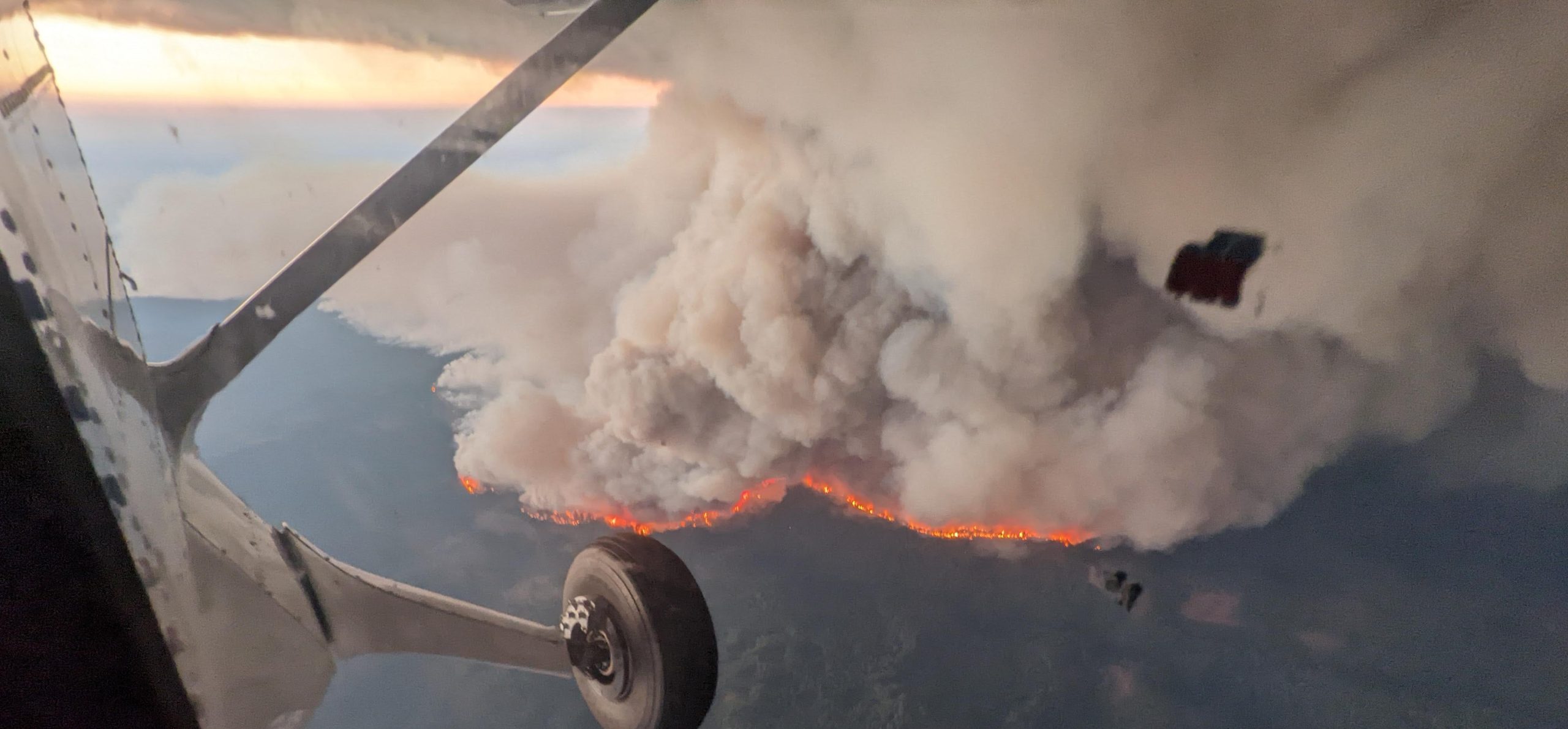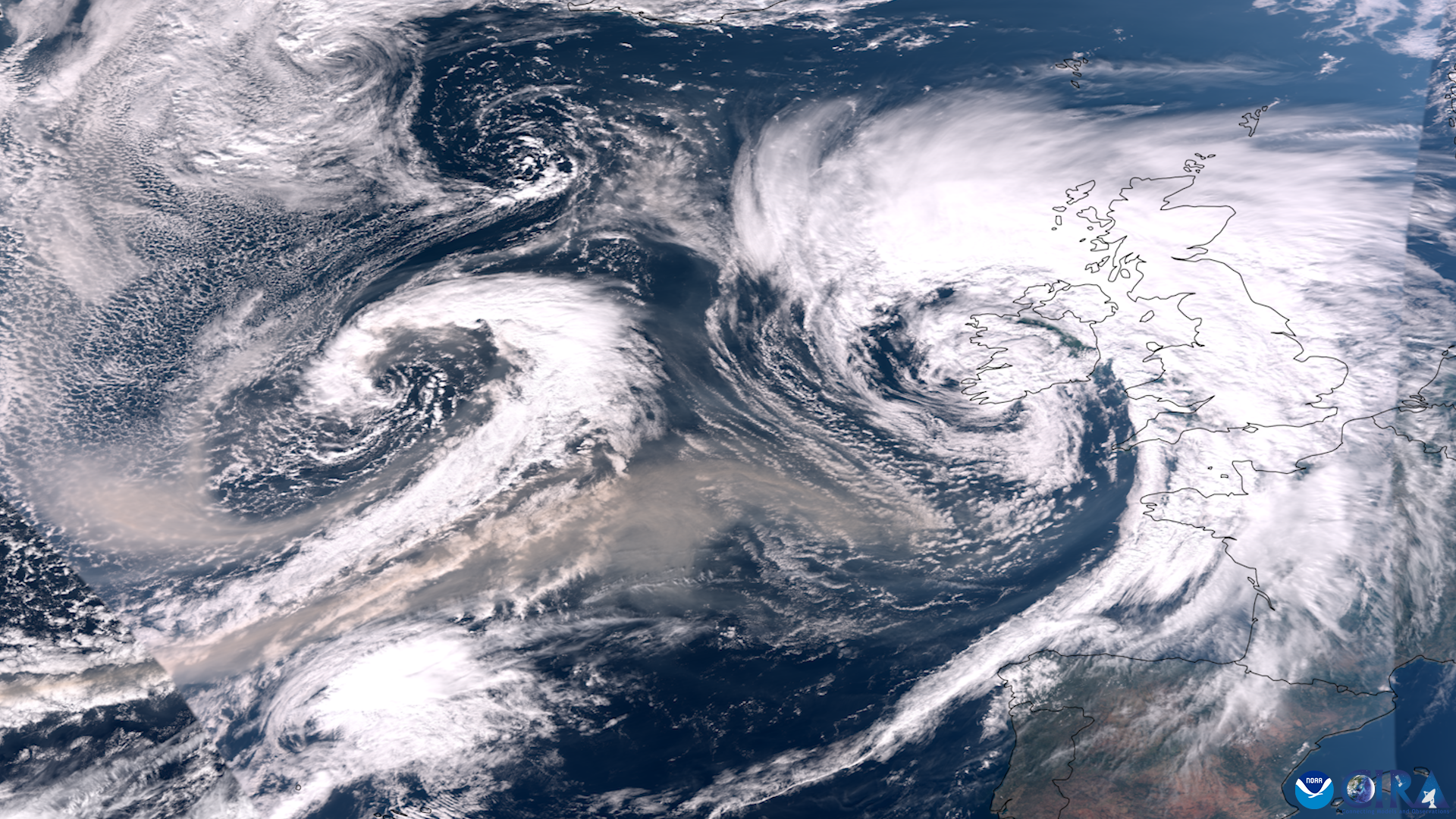New NOAA analysis of a ground-breaking global atmospheric airborne research mission shows that smoke from biomass burning substantially contributes to one of the most common and harmful constituents of urban air pollution: ozone. Another record-breaking fire season across the western United States and Canada fouled skies as far downwind as Boston and New York City with wildfire smoke, visibly demonstrating the impacts that fires can have on air quality thousands of miles away. Now, new NOAA research demonstrates that the effects of fire emissions on the atmosphere are even larger and far more widespread than previously believed, and substantially contribute to one of the most common and harmful constituents of urban air pollution: ozone.
The study, published in the Proceedings of the National Academy of Sciences, relied on data collected during the 2016–2018 NASA Atmospheric Tomography Mission, which used NASA’s DC-8 flying laboratory to survey the most remote regions of the troposphere over the Pacific, Atlantic, Arctic, and Southern Oceans.
The scientific team, which included some of the world’s top atmospheric researchers, found the signature of fire virtually everywhere, even in the most far-flung parts of the globe, something their chemical transport models failed to predict. Most surprising, however, was the realization that even in the heavily populated northern hemisphere, ozone from fire emissions was roughly equal to that from urban ozone sources, which are dominated by fossil fuel exhaust. In the less-heavily developed Southern Hemisphere and the Tropical Atlantic ozone attributed to fires outweighed that from urban sources by a factor of 2–10. “We’ve known for many years that, starting with the Industrial Revolution, urban emissions have led to increasing global ozone levels,” explained lead author Ilann Bourgeois, a CIRES research scientist who works in NOAA’s Chemical Sciences Laboratory. “What we didn’t expect to find was that fire emissions are actually contributing equal or greater amounts of ozone to the remote atmosphere than urban pollution.”
Ozone is a secondary air pollutant that often plagues cities on hot summer days. It is formed by sunlight-driven reactions between volatile organic compounds VOCs and nitrogen oxides NOx, which are emitted from consumer products, industry, and vehicle tailpipes. Fires can also eject massive quantities of gasses into the atmosphere, giving off a cocktail of chemical emissions that can produce ozone downwind. Ozone is also an important global greenhouse gas, third in line behind carbon dioxide and methane. With an atmospheric lifetime of up to several weeks, it can be transported over long distances to the most remote parts of the atmosphere.
Prior to the Atmospheric Tomography mission, the scientific community relied almost exclusively on global chemical transport models to inform their understanding of how ozone is distributed throughout the atmosphere. The extensive coverage of gas and aerosol measurements collected during the unprecedented research flights gave scientists a powerful new line of investigation. Using detailed measurements of ozone and “tracer” compounds, whose chemical makeup allows scientists to identify their source as urban pollution or fire emissions, researchers were able to classify air mass origin as urban, fire, or mixed, and to estimate the quantity of ozone arising from each source. When they compared their results to commonly used global models, it became apparent that the models had been significantly underestimating the ozone contribution from fire emissions. “These new observations have really been a game-changer for our understanding of where ozone in the remote atmosphere is coming from, and for our ability to test the accuracy of our models, which we need for things like forecasting air quality and predicting future climate,” said Bourgeois. “Given that ozone is a regulated air pollutant, and also contributes to climate change, it’s important to understand the sources of ozone to properly represent it in global models.”
In the paper, the researchers considered several reasons for the models underestimation of fire impacts, including miscalculating the volume of emissions used to initiate the models, the inability of models to represent small fires, or underestimating the behavior of smoke plumes, which can carry wildfire smoke higher into the atmosphere compared to urban emissions.
Regardless of the reason, Bourgeois said, two things are evident: global fire activity is a major control knob on the atmosphere, and global transport models need to improve their representation of smoke as a source of ozone. “Fire seasons are becoming longer and fire activity is growing more intense in some parts of the world,” said Bourgeois. “So our ability to represent fire emissions and their impacts will become even more important.”
This study was supported by NOAA, NASA, and the National Center for Atmospheric Research.
For more information, contact Theo Stein, NOAA Communications, by email at theo.stein@noaa.gov.



